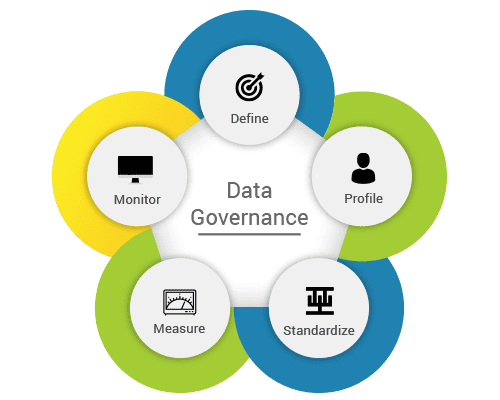The First Step Towards Interoperability Is Data Governance

Healthcare information has traditionally been managed application to application. This often leads to scattered and isolated information, and if we look at patient data specifically, most only think of it as being in the EHR (electronic health record). The healthcare industry is shifting the focus on analytics, which puts pressure or organizations to repair their foundational data. Instead of accepting the current state of siloed data sources, we need to take a more holistic approach to both how we look at healthcare information, and how we define it across different contexts – because data sharing is a critical component of data analysis.
Patients’ data is often represented by codes that correspond to diagnoses, measurements and lab tests, which vary enormously between geographies, insurers, hospital systems and providers. This makes analytical insights challenging, because data doesn’t exist across different systems in a one-to-one format. In addition to the plague of siloed data sets, a lack of standardized data governance processes is a major challenge. We can easily become overwhelmed by simply collecting or contributing data – never finding the time or resources for the linking and analysis that deliver insights.
Before any kind of standardization of data took place, data analysts could spend up to 40 hours per project validating data. And still, mistrust in the data persisted because it wasn’t defined holistically. For data analytics solutions to work, the data has to be reliable. So, where do you start? Data governance is the foundation of any successful analytics initiative.
By implementing data governance methods and standards for storing information, an analyst’s time is spent on generating insights, not data-gathering or cleansing. Ultimately, becoming a data-driven organization requires a culture change that is supported by technology solutions. Culturally, leaders require a disciplined mindset to utilize analytics for data-driven decision making, not just for operational reporting. Many leaders don’t do this currently because previous feelings of mistrust in data linger, e.g. questions like “Where did this data come from?” persist. With data governance in place, they can renew a sense of trust in data and start leaning on analytics for fact-based decisions instead of instincts. To gain adoption across other stakeholders in healthcare organizations, leaders must demonstrate how data governance programs and their underlying initiatives directly support corporate objectives.
The key to delivering value is understanding what data you have, where the data is managed and how data is used. From a technology standpoint, cloud-based tools can reduce barriers and the time to realize value. If we just focus on understanding our data, we can start the process of building a common vocabulary, assign decision-rights, reduce data duplication and develop a holistic analytics platform that supports the entire enterprise. The demands for advanced data and analytics capabilities are relatively new to healthcare, and EHR applications were not designed to support these evolving demands.
New open-source cloud platforms like Gray Matter’s CoreTechs®can help solve the twin issues of data sharing and standardization. A subscription-based cloud platform allows easy data aggregation, automates the monitoring of the data quality, provides easier data sharing, better cyber security and has the ability to scale cost effectively. The aim is to bring the pieces of the complex puzzle together, by providing a single point of access and looking at the patient holistically.
